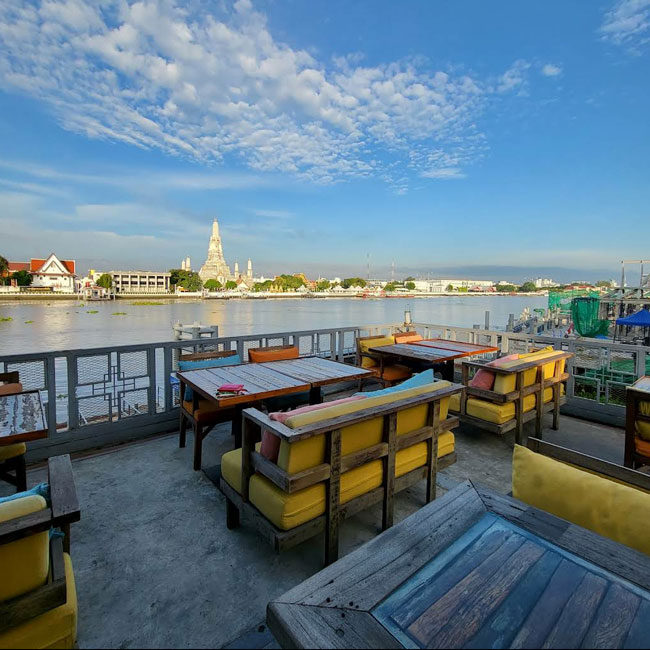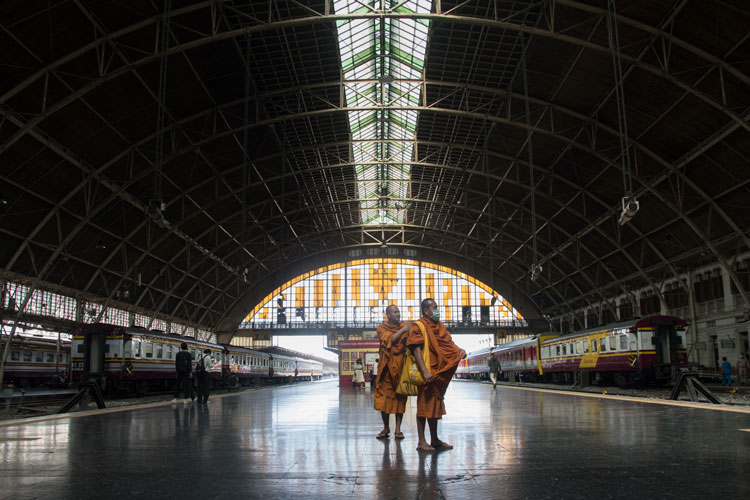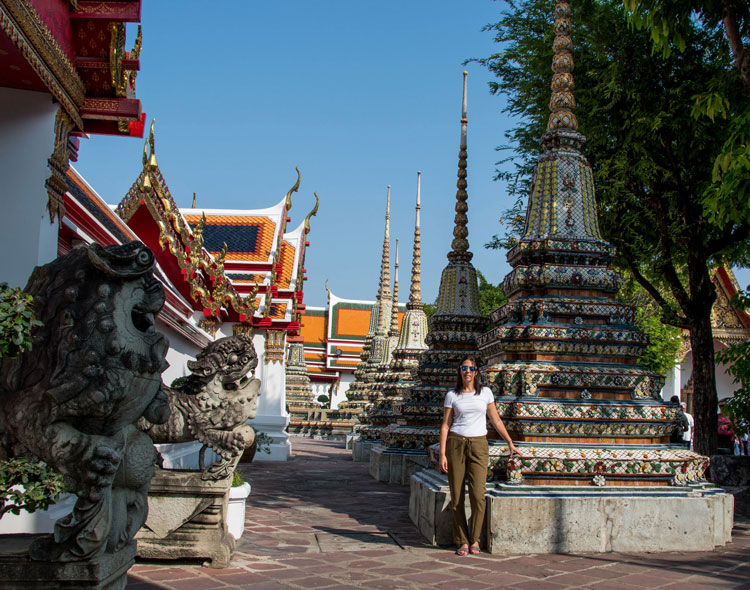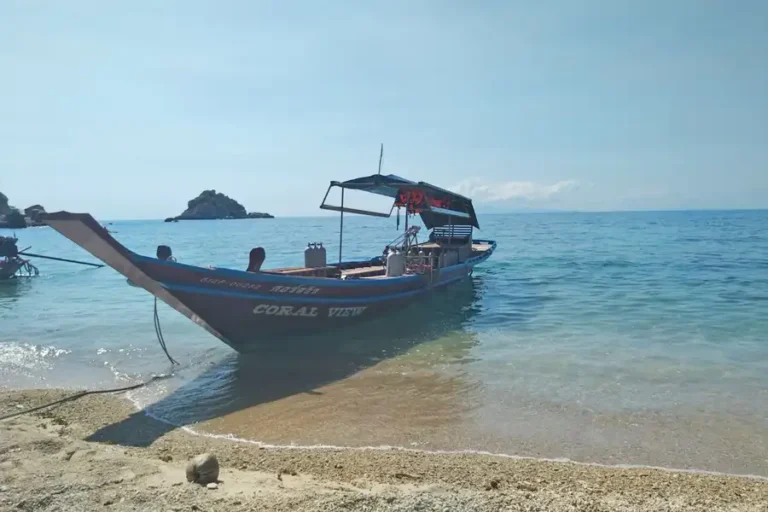This article may contain affiliate links.
Updated: October 30, 2025
Khao Yai National Park is one of those surprises you don’t expect so close to Bangkok. Just a few hours from the city, you’ll find yourself surrounded by tropical jungle, huge waterfalls, monkeys swinging through the trees, and if you’re lucky, an elephant crossing the road.
In this guide, I’ll tell you everything you need to know to visit: the best hiking trails, how to get there, entrance fees, where to stay, and a few tips to make the most of your trip.
If you don’t have time to read the whole article, I recommend this tour to Khao Yai from Bangkok— it’s the one I took myself, and it’s very complete and well-priced.
What to Do in Khao Yai
This was Thailand’s first national park, and since 2005 it’s been a UNESCO World Heritage Site for its incredible biodiversity — so it’s not just any jungle. It’s the perfect place to escape Bangkok’s chaos without having to get on a plane.
Khao Yai National Park is huge and has a bit of everything: tropical rainforest, stunning waterfalls, trails through giant trees, and plenty of wildlife that doesn’t hide as much as you’d expect.
You don’t need to be super adventurous to enjoy it, but it’s worth planning what to see, since the park is large and distances can be tricky.
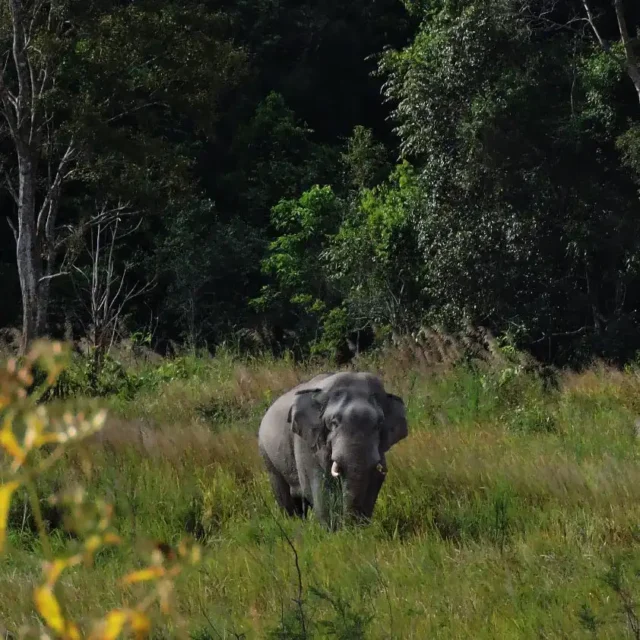
1. Hiking trails
There are seven marked trails ranging from 1 to 8 kilometers. The shorter ones can be done in just a few hours — perfect if you’re planning a day trip from Bangkok.
The longer ones require a guide, especially those that pass through dense jungle or lead to Haew Suwat Waterfall.
The trails are clearly marked with signs like the one in the photo below — the top number indicates the trail, and the bottom one shows the distance in meters.
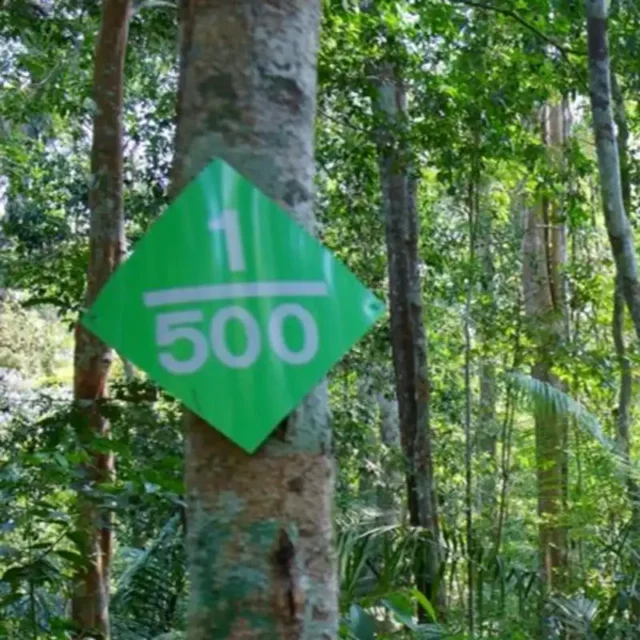
Most trails are open year-round, except for Haew Suwat, which closes in July and August
Still, if you visit during the rainy season, I recommend asking at the Visitor Center which ones are open, as some may close for safety reasons.
Below you’ll find two maps: one general map of the park showing both visitor centers (north and south, with the north one being the main entrance), and another schematic map with the hiking routes. You’ll also find a table with details for each trail — distance, duration, and other useful info to help you choose the right one.
2. Waterfalls
The two main waterfalls are Haew Suwat and Haew Narok. The first became famous after appearing in the movie The Beach with Leonardo DiCaprio, and while it’s not very tall, the setting is beautiful.
The second, Haew Narok, is much more impressive — about 80 meters high, with a roar you can hear before you even see it.

If you visit during the rainy season (June to October), the waterfalls are at their best, but wear shoes you don’t mind getting muddy. In April and May, they can be almost dry.
🎥 Fun fact: Most of The Beach was filmed at Maya Bay in the Phi Phi Islands, with a few scenes shot in Bangkok and Phuket. If you’re curious, I talk more about the filming locations in my article about movies shot in Thailand .
3. Flora
Khao Yai Park covers an impressive 2,000 km² of jungle, forest, and grasslands, with over 3,000 recorded plant species. If you love plants, this place is paradise.

Depending on the altitude, you’ll find everything from humid tropical forests full of vines and giant bamboo to cooler areas with ferns, wild orchids, and massive trees like strangler figs and dipterocarps, typical of Southeast Asia.
During the rainy season, the park turns a vibrant green, and the air smells of wet earth and flowers.
4. Fauna
This national park in Thailand is home to a wide variety of wildlife: 392 bird species, 112 mammals, and more than 200 reptiles and amphibians.

The best part — and the reason I decided to visit — is that Khao Yai is one of the few places where you can see wild elephants in Thailand.
Since they’re truly wild elephants, seeing them isn’t guaranteed, but in my experience it’s much easier if you join a guided tour — the park rangers usually know where they are and share updates with each other.
There are also specific areas of the park where they’re often seen, mainly along hiking trails 3, 5, and 6.
Other animals you might spot include deer, snakes, bats, gibbons, and colorful hornbills like the one in the photo below.
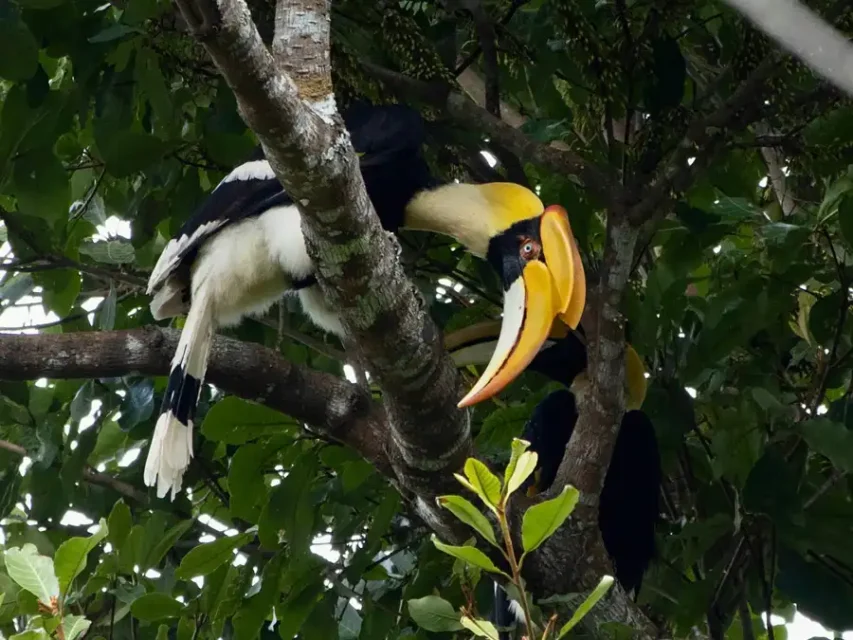
👍 My two cents: If you care about animals and want to see elephants, nothing compares to watching them free in a national park like this. You might also like my other article about Elephant Sanctuaries in Thailand: Ethical or Just a Business?
5. Other places
Other interesting spots in the park include scenic viewpoints overlooking the valley, observation towers perfect for wildlife watching at sunset, and caves where thousands of bats fly out at sunset.
If you join a tour, they usually include some of these stops, and the guide makes sure you don’t miss the best moments.
✅ Friendly Tip: Don’t forget to get travel insurance for your next adventure. I recommend Heymondo,—it’s super comprehensive, and with that link, you’ll get 5% off.
Maps
🔹 Map of Khao Yai

🔹 Schematic map of hiking trails in Khao Yai
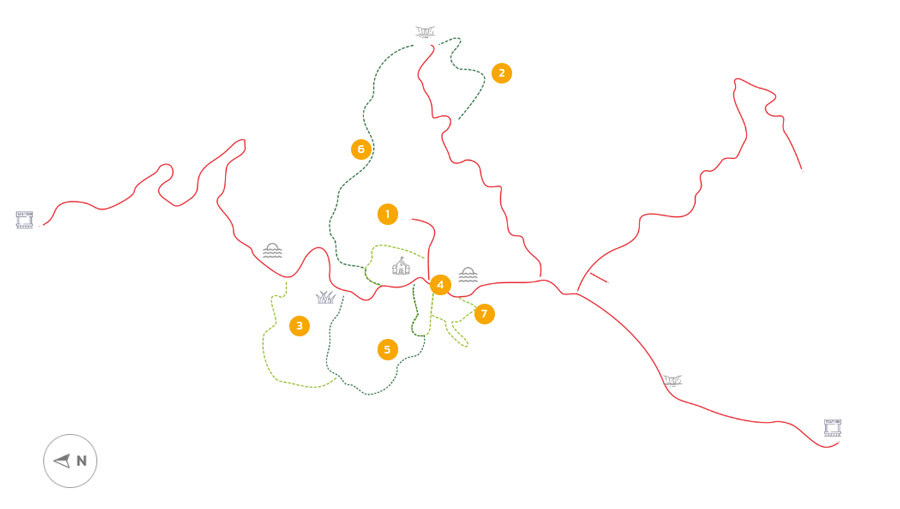
🔹 Practical hiking information
| No. | Trail name | Distance | Approx. duration. | Necessary guide | Start / End | Observations |
|---|---|---|---|---|---|---|
| 1 | Visitor Center – Kong Kaew Waterfall | 1.2 km (circuit) | 45 min – 1 h | No | Suspension bridge behind the Visitor Center | Easy trail through jungle and dry forest. Ideal for all ages. |
| 2 | Pha Kluai Mai Camp – Haew Suwat Waterfall | 3 km (one way) | 2 h | No | Pha Kluai Mai Campground / Haew Suwat Waterfall | It connects two waterfalls following the Lam Ta Khong stream. |
| 3 | Km 33 – Nong Phak Chi (Thailand-Switzerland Friendship Trail) | 4.2 km (one way) | 2.5 – 3 h | Yes | Km 33 / Km 35 (near the observation tower) | It passes through various types of forest and grassland areas. Elephant and bird sightings are possible. |
| 4 | Dong Tiw – Sai Sorn Reservoir | 2.7 km (one way) | 1.5 – 2 h | Yes | Dong Tiw (200 m from Sai Sorn Visitor Center) / Sai Sorn Reservoir | Dry and secondary forest, habitat of the Lar gibbon. Good place to watch the sunset. |
| 5 | Dong Tiw – Nong Phak Chi | 5.5 km (one way) | 3 h | Yes | Dong Tiw / Km 35 (near the observation tower) | A varied trail with forests and hills. Possible sightings of elephants, bears, and gibbons. During rainy weather, crossing the stream can be difficult. |
| 6 | Visitor Center – Haew Suwat Waterfall | 8 km (one way) | 6 h | Yes | Suspension bridge behind the Visitor Center / Haew Suwat Waterfall | Long and demanding. Habitat for elephants, bears, and hornbills. |
| 7 | Thailand–US Friendship Trail. | 2 km (circuit) | 1.5 h | No | Shore of the Sai Sorn reservoir / same point | It passes through dry forest and grasslands. Easy and educational. |
Notes and recommendations:
- Bring water, insect repellent, and hiking shoes, especially during the rainy season.
- All trails are open year-round except trail 6, which is closed from July 1 to August 31.
- You can start hikes between 8 a.m. and 2 p.m., but trail 6 must start no later than 10 a.m.
- If you only have one day, the short trails are perfect to enjoy the jungle without rushing. But if you stay longer, it’s worth trying one of the longer ones, where you’ll have a better chance of spotting wildlife.
Prices and Opening Hours
- Entrance Fee: 400 baht for adults and 200 baht for children aged 3–14 (updated in 2025)
- Vehicle fee:
- Motorbike: 20 baht
- Car: 30 baht
- Opening Hours: 6 a.m. to 6 p.m.
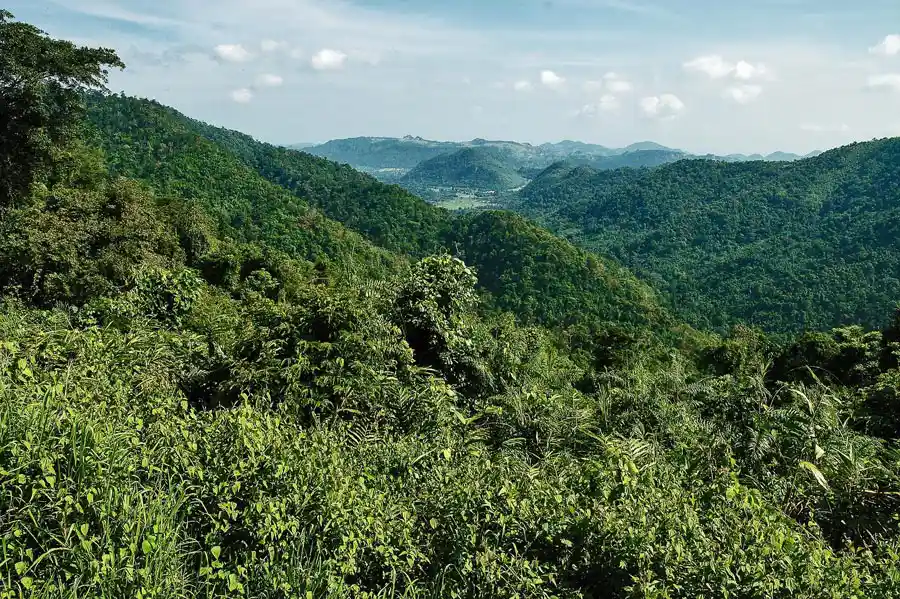
How to Get from Bangkok
Khao Yai National Park is about 180 kilometers from Bangkok, so getting there isn’t complicated, but it’s good to know your options before you go. You can get there by bus, train, car, or join a tour.
1. Minibus
Minibuses leave from Mochit Station and take about 2.5 hours to reach Pak Chong, the closest town to the park.
Tickets cost around 6 euros. On this website, you can check the schedule and book your ticket.
From Pak Chong, you can take a local bus to the park entrance — the ride takes about 30 minutes and costs around 1 euro. If you don’t want to wait, you can also take a taxi from the village.
2. Train
Trains depart from Bangkok’s main station, Krung Thep Aphiwat, and take around 2.5 hours to reach Pak Chong.
Prices vary depending on the train type and class, but you can find tickets for about 3 euros. On this website, you can check the timetable, prices, and book your ticket.
From the station, you’ll need to take a local bus or a taxi to the park.
3. Car
If you prefer to travel at your own pace, renting a car is a great option. The road is in good condition and the route is straightforward, though you should be ready for some traffic when leaving Bangkok.
The drive takes about three hours. If you’re traveling with others, it can end up costing roughly the same as public transport, but with much more flexibility.
To rent a car in Thailand, I recommend this website— it’s the one I always use, and I’ve found cars for as little as 12 euros / 14 USD per day.
4. Day trip
The most convenient option (and the one I chose) is to join this Khao Yai day trip from Bangkok. It includes transportation, a guide, and the park entrance fee.
Guides usually know the best spots to see animals and take you straight to the most beautiful places, like Haew Suwat Waterfall. If you only have one day, it’s definitely the best way to make the most of it.
How to Get Around the Park
Getting around the park can be a bit tricky if you don’t have your own transport, as distances are long and public transportation inside the park is very limited.
🔹 Car or motorbike
If you arrive with your own vehicle, you can explore the park at your own pace. The roads are paved and in good condition, though it’s common to see a deer crossing or a group of monkeys hanging out by the roadside.
Drive carefully — the curves are sharp, and mornings are often foggy.
🔹 Taxi or private driver
Another option is to hire a taxi or private driver in Pak Chong to take you to the park and accompany you throughout the day. You’ll usually agree on a fixed price for the full day, with stops at the main sights.
There are no taxis or apps like Grab available inside the park, so you’ll need to arrange this before getting there.
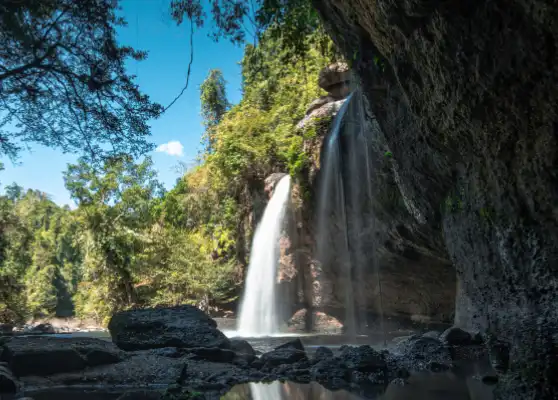
🔹 By bicycle
If you enjoy cycling, you can rent a bike near the Visitor Center. It’s a nice option for short distances, but the hills and humidity can quickly turn it into a workout.
🔹 Local tour
From the Visitor Center, guided tours are organized that include transportation, a guide, and short hikes along the most popular trails. It’s a great alternative if you don’t have a car or simply prefer to let someone else handle the logistics.
👍 My two cents: If you’re looking to stay connected during your trip, 🤳 I recommend this eSIM for Thailand with unlimited data and work perfectly. Just use that link for a 5% discount. If you're looking for a budget-friendly alternative, this other eSIM starts at 4 euros.
Where to Stay
If you really want to make the most of your visit, it’s best to stay in Khao Yai at least one night. That way, you can explore at your own pace, enjoy the sunrise, and have a better chance of spotting wildlife.
🔹 Accommodation inside the park
There are two official camping areas: Lum Ta Kong and Khao Rom Sai. Both are quiet and surrounded by nature. Sleeping there is quite an experience, especially if you like waking up to the sounds of the jungle.
The price is about 30 baht per person, and you can rent everything you need: a tent, sleeping bag, blankets, pillows, and a mat.
During high season, it’s best to book in advance through the park website or directly at the Visitor Center.
Don’t expect luxury, though — there are bathrooms, showers, and a small shop, but not much else apart from the beauty of nature.
There are also basic bungalows, with the smallest ones for two people, starting at 560 baht per night.
🔹 Accommodation outside the park
If you prefer a proper bed and a private bathroom, Pak Chong and the nearby area have plenty of great-value options. From simple hotels to bungalows with green views, there’s something for everyone.
The hotel I can recommend is the Moosiyard Hometel Khaoyai— it’s pretty and affordable. My brother and his girlfriend stayed there, and in their words, “the best breakfast we had in Thailand, and the peace of the place was incredible.”
🔹 Tips
- If you don’t have a car, look for a place that offers transfers to the park or includes tours.
- During high season (November to February), book in advance — Khao Yai is very popular among locals.
- If you plan to see the sunrise in the park, staying inside or near the main entrance will save you a lot of travel time.
🤑 If you want to save on your next adventure, use this link from Booking to get 15% off your stay.

FAQs
Absolutely. It’s an amazing jungle and one of the best day trips from Bangkok where you can still see wild elephants. Plus, it’s a UNESCO World Heritage Site with waterfalls, trails, and wildlife for every taste.
If you love nature and want to see a wilder side of Thailand, Khao Yai is perfect.
The best time is from November to February, when temperatures are cooler and there’s less rain.
Between June and October, it’s monsoon season — the jungle is at its greenest and the waterfalls are spectacular, but there’s also more mud and leeches. During this time, bring patience, an umbrella, and a sense of humor.
If you’re wondering about the rest of the year, temperatures start to rise in March, and April and May are very hot — not the best months for hiking. The waterfalls can also be almost dry then.
If you only have one day, you can see the main spots with a day trip. But if you enjoy hiking or nature photography, I recommend staying one or two nights. The park is huge, and there’s always something left to explore.
Water, insect repellent, sunscreen, a hat, and good footwear. If you visit during the rainy season, add a light raincoat and extra socks.
It’s also a good idea to bring some food or snacks, since there aren’t many places to eat inside the park apart from the Visitor Center.
Yes, and it’s one of the main reasons to visit Khao Yai. However, sightings aren’t guaranteed — it depends on the time of day, season, and luck. The park rangers usually know where they are, so joining a guided tour greatly increases your chances of seeing them.
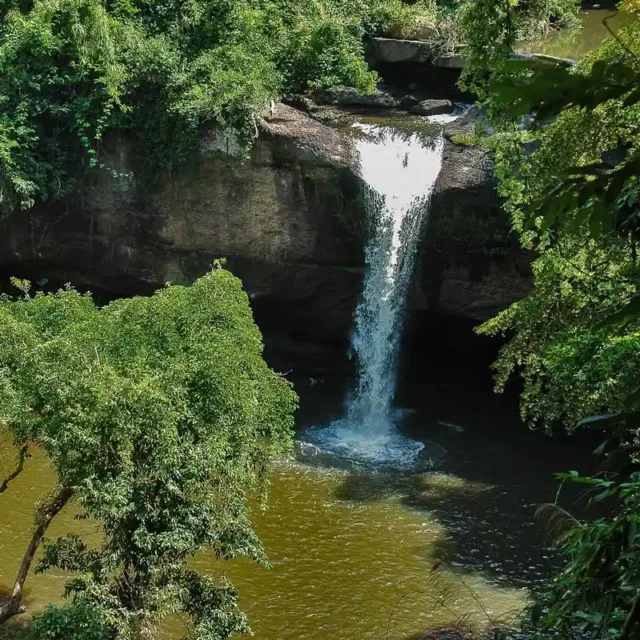
Final Thoughts
Khao Yai National Park is one of those incredible natural places just a few hours from Bangkok. If you love adventure, it definitely deserves a spot on your Thailand itinerary.
If you have any questions, leave me a comment below and I'll help you as much as I can. If you found the article useful, share it with other travelers. Have a good trip! 😘
More about Bangkok and surrounding areas
More about Thailand

Hi, I’m Andrea, creator and author of Viajeros Activos (Active Travelers). I write about Southeast Asia, the Caucasus, and Europe. I’m a full-time traveler, passionate about good food, and always looking for new adventures.


